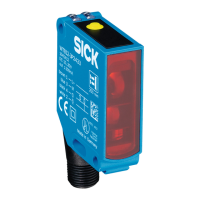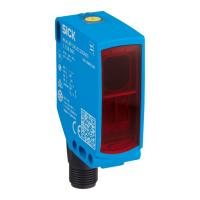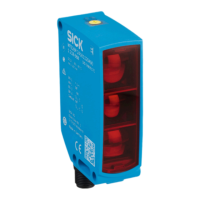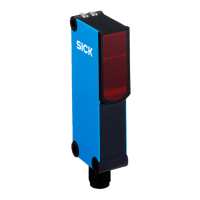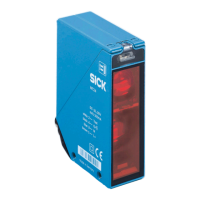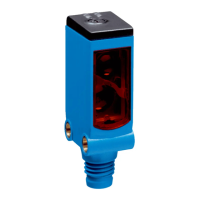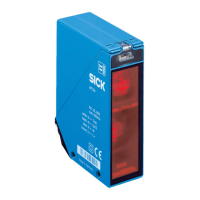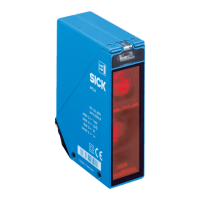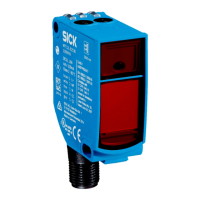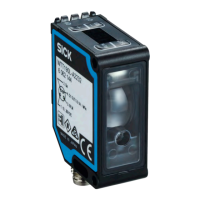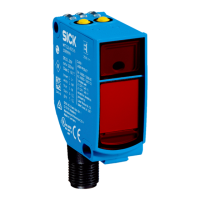LED indicator/fault pattern Cause Measures
ommend using only SICK
reflectors) /Check sensing
range and adjust if neces‐
sary. /distance between sen‐
sor and reflector is too large
Signal interruptions when
object is detected
Depolarizing property of the
object surface (e.g., tape),
reflection
Reduce sensitivity or change
the position of the sensor
11 Disassembly and disposal
The sensor must be disposed of according to the applicable country-specific regula‐
tions. Efforts should be made during the disposal process to recycle the constituent
materials (particularly precious metals).
NOTE
Disposal of batteries, electric and electronic devices
•
According to international directives, batteries, accumulators and electrical or
electronic devices must not be disposed of in general waste.
•
The owner is obliged by law to return this devices at the end of their life to the
respective public collection points.
•
This symbol on the product, its package or in this document, indicates
that a product is subject to these regulations.
12 Maintenance
SICK sensors are maintenance-free.
We recommend doing the following regularly:
•
Clean the external lens surfaces
•
Check the screw connections and plug-in connections
No modifications may be made to devices.
Subject to change without notice. Specified product properties and technical data are
not written guarantees.
13 Technical data
Table 9: Technical data
WL34-B / -V -R
Sensing range (with reflector PL80A) 0.03 ... 15 m 0.03 ... 15 m
Sensing range max. (with reflector PL80A) 0.03 ... 22 m 0.03 ... 22 m
Light spot diameter/distance Ø 250 mm (15
m)
Ø 250 mm (15
m)
Supply voltage U
B
DC 10 ... 30 V AC / DC 20 ...
250 V
1)
Output current I
max.
100 mA
11 DISASSEMBLY AND DISPOSAL
12
8009201.11O1 | SICK
Subject to change without notice
